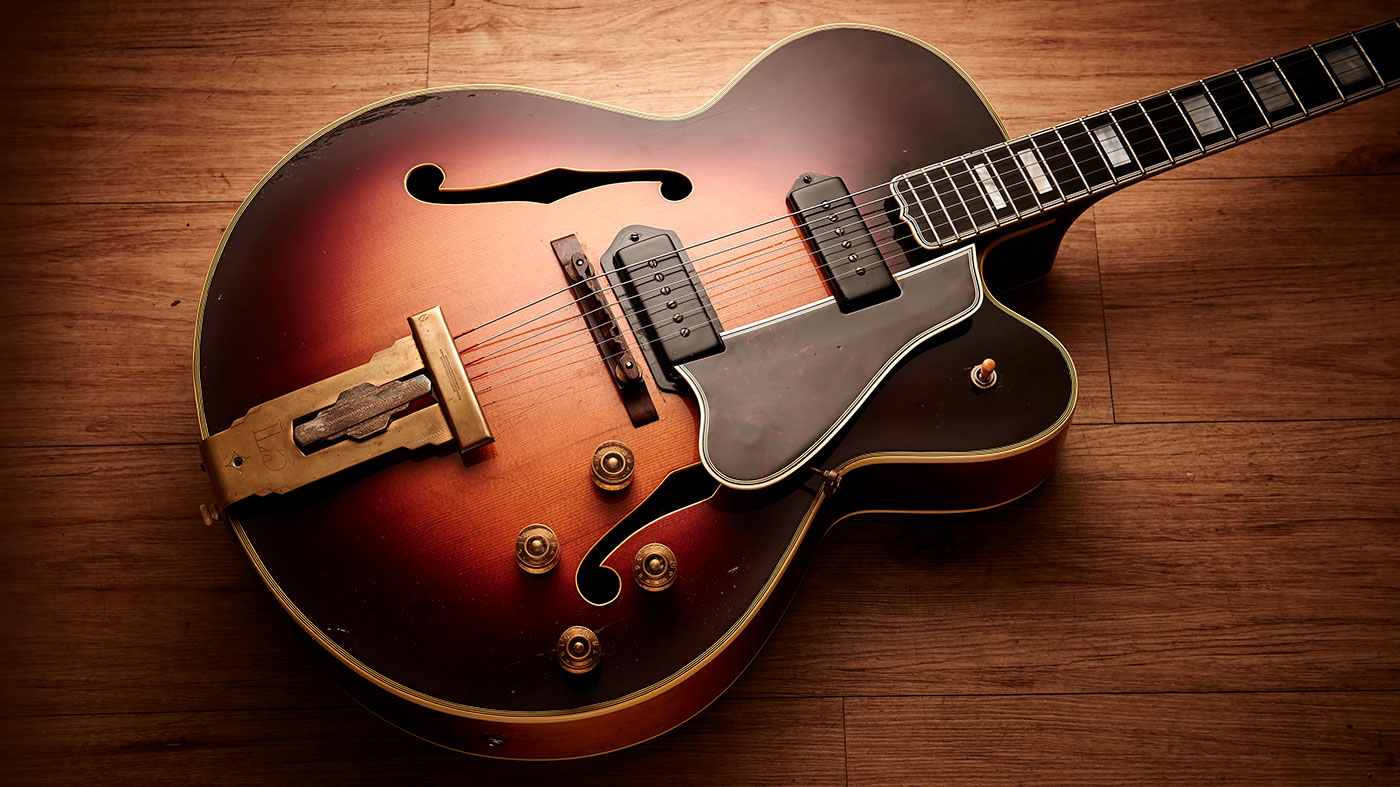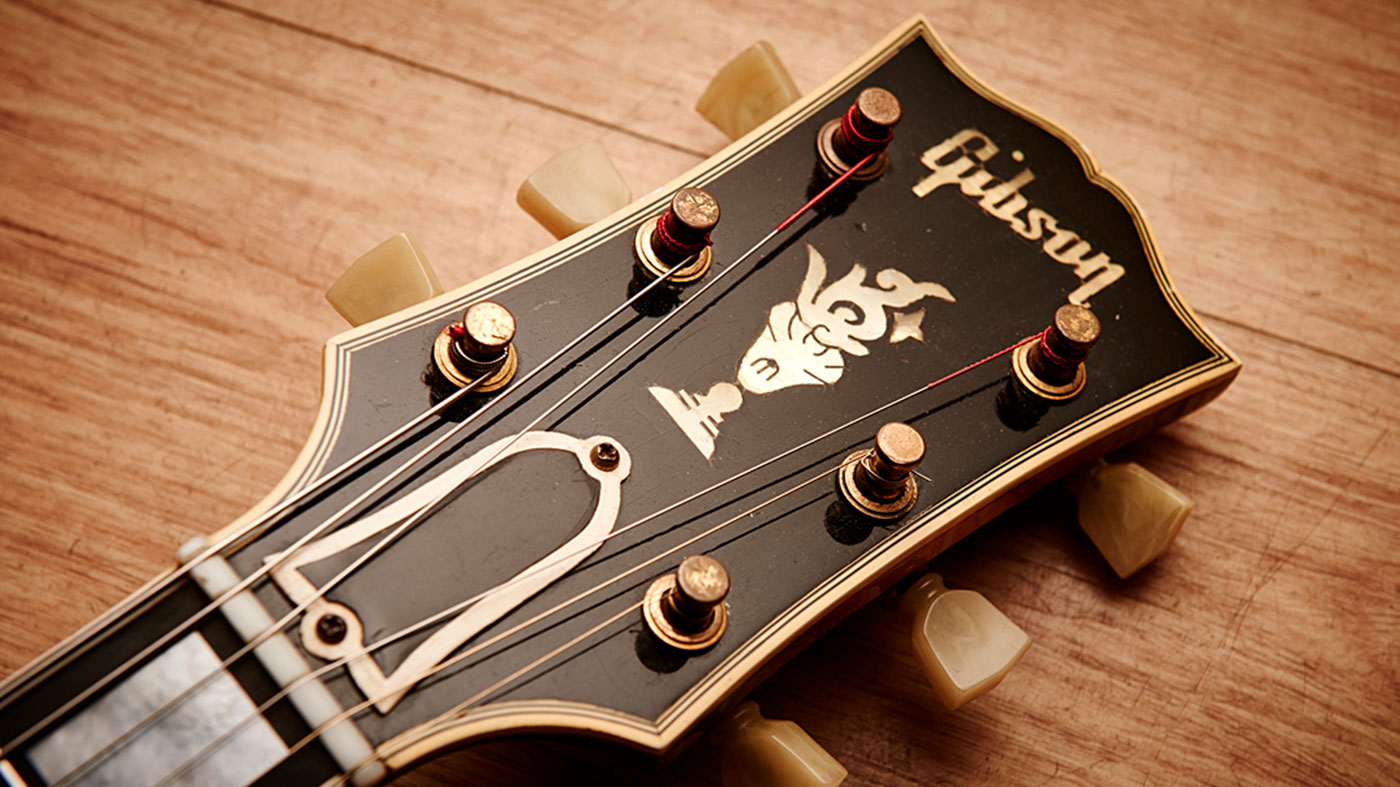
Like so many of Gibson’s revered archtops, the L-5’s story begins in the pre-war era of the 1920s where it found fame in the hands of jazz guitar pioneer Eddie Lang.
The Lloyd Loar designed, Kalamazoo-produced acoustic version of the L-5 was renowned for its ability to cut through a horn section and was one of the instruments thought responsible for the demise of the tenor banjo in the dance bands of the day.

Body
The L-5’s lower bout measures in at an impressive 432mm (17 inches), though still an inch thinner than the mighty Super 400 CES, introduced in the same year.
Headstock
The L-5’s impressively bound headstock is decorated with what has become known as the ‘flowerpot peghead’ inlay.
Pickups
The very first L-5 CES models had P-90 pickups, which were replaced in 1954 with Alnico Vs and, subsequently, humbuckers in late ’57.
It was also the first Gibson archtop to feature f-holes, thus setting the template for the design of jazz guitars ever since. Players who have been seen with an L-5 CES in their hands include Tuck Andress, George Van Eps, Howard Roberts and Lee Ritenour.
The L-5 CES - the letters standing for ‘Cutaway Electric Spanish’ - was introduced into Gibson’s catalogue in 1951 with a carved spruce top, maple back and sides and two P-90 pickups.
Phil Carwardine of Vintage And Modern Guitars takes up this particular model’s story: “It’s a 1951, which was the first year for it; I think there were only 31 made that year. As far as I know, it’s all original. Like all these things, we’re looking at a neck re-set somewhere down the line and so we’ve had to take a spacer out of the back pickup and drop it down to get it to play, but it’s perfect as it is.
“It’s quite red,” he continues. “It’s more like an L-7 red. I’ve seen other L-5s from that period and they’re darker, more mottled. But you go insane, checking the different finishes… They were all handdone. Whoever did it on the day, you got a different type of finish.”
The 1950s also heralded the beginning of the rock ’n’ roll era, and the L-5 had a role here, too. “For me, it’s a Scotty Moore guitar, although his was blonde,” Phil adds. “But as soon as you play it, you can hear it and it takes you back.”
Get the MusicRadar Newsletter
Want all the hottest music and gear news, reviews, deals, features and more, direct to your inbox? Sign up here.
Our thanks to Vintage And Modern Guitars for allowing us access to this beautiful instrument.
Guitarist is the longest established UK guitar magazine, offering gear reviews, artist interviews, techniques lessons and loads more, in print, on tablet and on smartphones Digital: http://bit.ly/GuitaristiOS If you love guitars, you'll love Guitarist. Find us in print, on Newsstand for iPad, iPhone and other digital readers
“I feel like that song had everything we needed to come back with”: Bring Me The Horizon’s Lee Malia on Shadow Moses, its riff and the secrets behind its tone, and why it was the right anthem at the right time
“For those on the hunt for a great quality 12-string electro-acoustic that won’t break the bank, it's a no-brainer”: Martin X Series Remastered D-X2E Brazilian 12-String review












